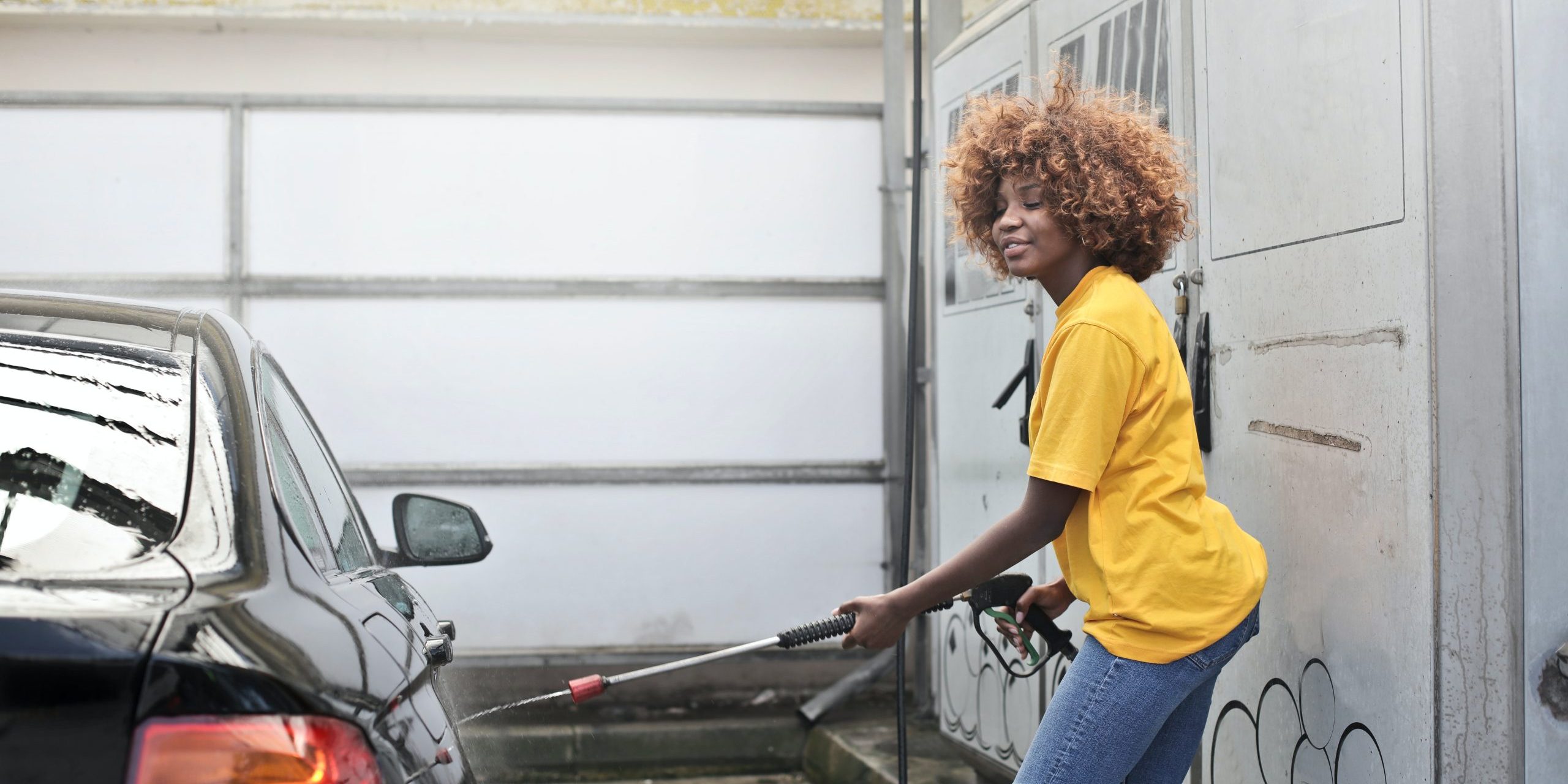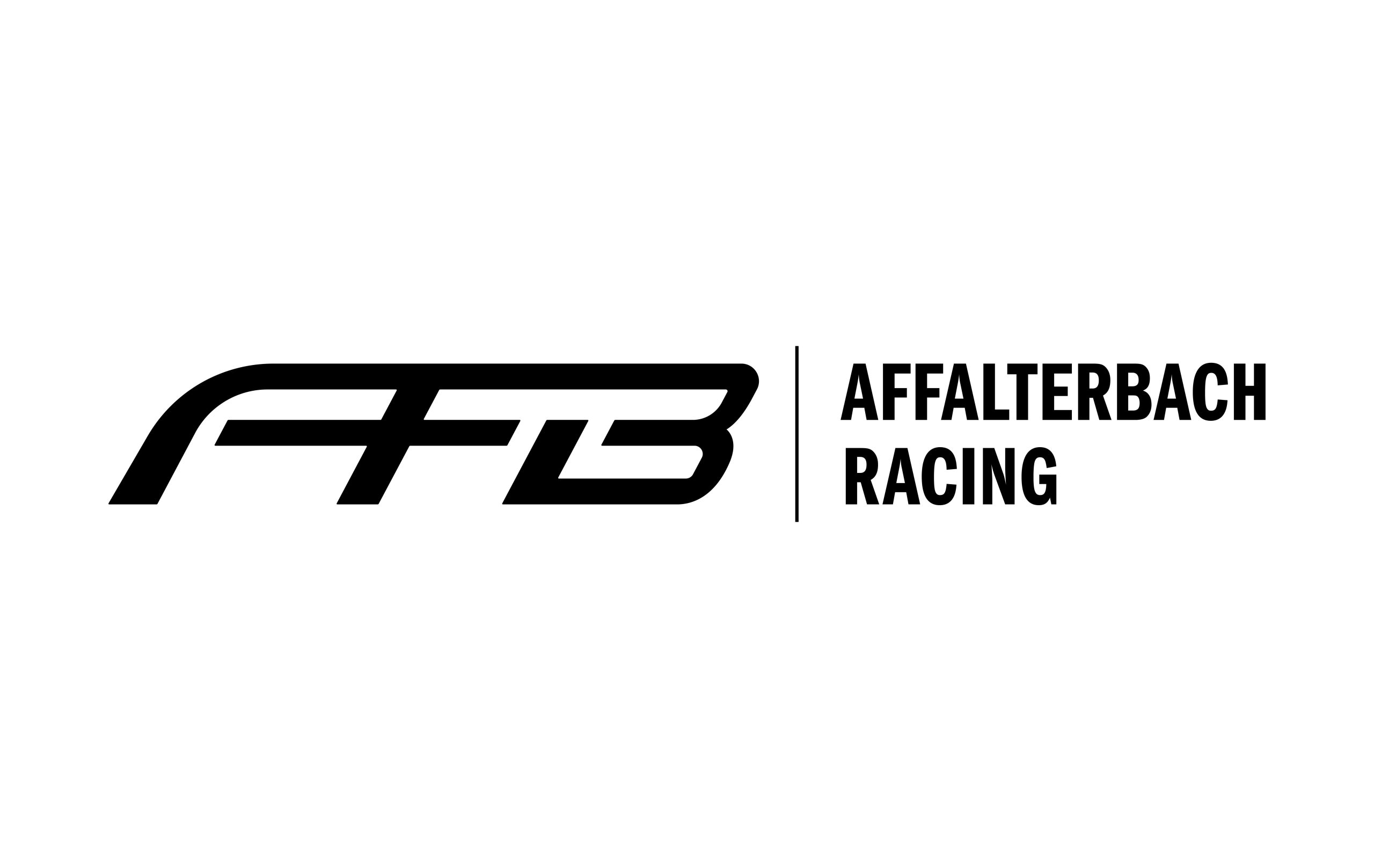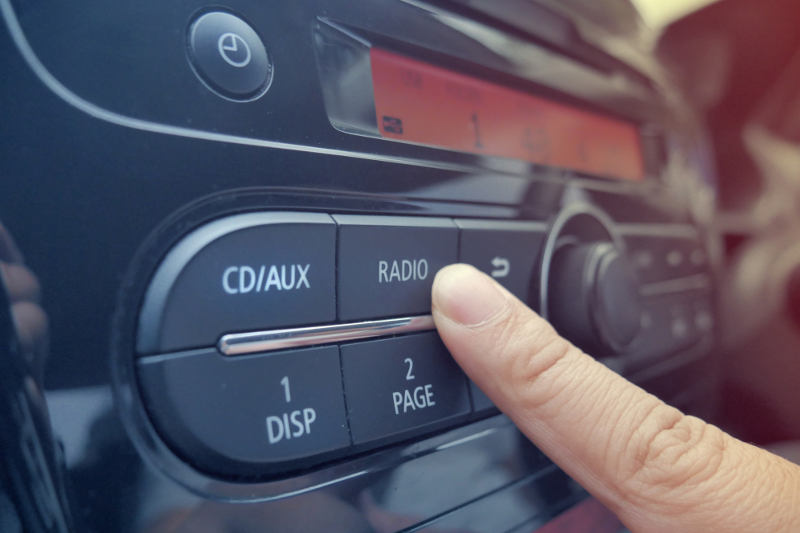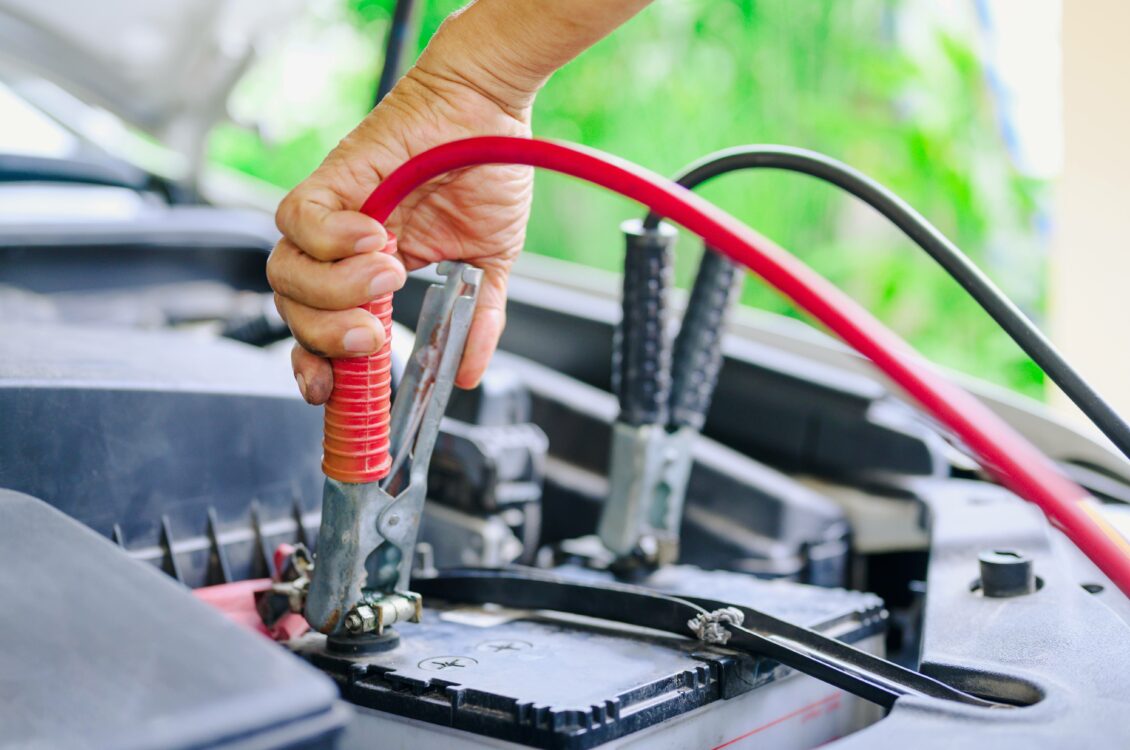How long does a car detail take?


Have you ever wondered how long it takes to detail a car? Whether you’re a car enthusiast or simply looking to keep your vehicle in top condition, understanding the time and effort required for a professional car detail can help you plan your schedule and budget accordingly.
In this article, we’ll explore the various factors that can impact the length of a car detail, from the size and condition of the vehicle to the specific services requested. By the end, you’ll have a better idea of what to expect when it comes to the time commitment of a professional car detail.
Size and Condition of the Car
The overall dimensions and state of the vehicle can significantly affect the time required for detailing services. Factors such as the level of dirt, scratches, and dents, as well as the size of the car, can impact the duration needed to complete a thorough detailing service.
Here is a table showing how different sizes and conditions can affect the detailing process:
| Size/Condition | Time Required |
|---|---|
| Small, Clean | 2-3 hours |
| Small, Dirty | 3-4 hours |
| Medium, Clean | 3-4 hours |
| Medium, Dirty | 4-5 hours |
| Large, Clean | 4-5 hours |
| Large, Dirty | 5-6 hours |
It is important to note that unique factors affecting each particular vehicle may influence these times.
Additionally, regularly maintaining your vehicle’s condition can help decrease time spent on detailing. Simple practices such as regular washes and wiping down surfaces after use will aid in preventing buildup of dirt and grime. Furthermore, addressing any necessary repairs or touch-ups promptly will prevent larger issues from developing over time. By following these steps carefully and being mindful of your vehicle’s condition, ultimately resulting in a cleaner car that requires less work to detail.
Type of Detailing Package Selected
For the selection of car detailing package, there are various factors that affect the time required for the process. One such factor is the level of car detailing package selected.
Below is a table that lists different types of car detailing packages and their estimated time requirements:
| Basic Detailing Package | Approximately 1-2 hours |
| Premium Detailing Package | Approximately 3-4 hours |
| Ultimate Detailing Package | Approximately 6-8 hours |
In addition to the type of detailing package selected, other factors influencing the time required include the size and condition of the vehicle, as well as equipment used by the detailer.
A customer had once requested an ultimate detailing package for his large-sized SUV. However, due to some unforeseen circumstances like heavy rain and winds, it took longer than expected to clean all areas of his vehicle. The detailing team paid extra attention due to possible contamination on its exterior surfaces caused by flying debris during bad weather conditions, which added nearly two more hours on top of an already complex detail job. Nevertheless, our skilled team managed to complete this comprehensive task in around ten straight hours so that our customer has a spotless SUV running efficiently on his next road trip!
Number of Detailing Tasks Included
In a car detailing service, the time required for completing the work can depend on various factors. One crucial aspect is the ‘Range of Detailing Tasks.’ It refers to all the activities involved in cleaning and polishing a vehicle.
- Extent of Cleaning: The number of areas that require deep cleaning or stain removal affects the overall duration.
- Number of Coatings: Applying multiple layers of wax or paint sealant takes additional time and effort.
- Type of Services: Detailing tasks can vary from basic washes to complete restoration services, altering the duration accordingly.
- Condition of Vehicle: In cases where cars have been uncleaned for long periods or heavily used, detailing tasks may require an extended period.
Additionally, the extent to which each of these tasks is performed also impacts detailing time but there are no hard and fast rules that dictate what needs to be done. For instance, some eco-conscious customers may request fewer chemicals exposed during car washing while others want interior details stripped-down as far as possible.
A customer once asked for their truck to be washed with homemade sparkling water. It took significantly more time than expected, but the outcome was highly satisfying.
Types of Car Detailing Services and Their Duration
To understand the duration of different types of car detailing services, dive into the section about “Types of Car Detailing Services and Their Duration” with a focus on “Exterior Detailing, Interior Detailing, and Full Detailing” as solutions.
Exterior Detailing
The Art of Beautifying a vehicle’s exterior appearance through a meticulous cleaning and pampering process is referred to as Exterior Detailing. Here is a 5-step Guide to achieve an immaculate exterior finish –
- Pre-Washing: Removing any loose dirt and debris using pressure washing
- Washing: Handwashing using PH Neutral Shampoo
- Clay Bar Treatment: Removing contaminants from the paint surface to make it smooth.
- Polishing: Using machine polishing technique with compound or polish cream for smoothing out scratches, swirl marks, and give it a glossy finish.
- Protection: Applying Wax, Sealant or Ceramic Coating on paintwork and wheels for long-lasting protection.
It’s essential to remember unsightly water stains can stain the glass; thus, detailed attention must be given to spot-clean windows & mirrors. Practice extreme caution around the exhaust tip not to damage it.
A Professional Detailer may take anywhere between 4-8 Hours or more depending on the level of detailing required for an Exterior Detailing Session. The precise duration may depend on factors such as climate, level of soiling, vehicle size/type/condition.
In 1912, Simons Smith Wax Company developed the first car wax that was named Turtle Wax, paving the way for modern-day automotive detailing industry that undoubtedly brings life into vehicles.
If you’re in a hurry, hand wash your car in 30 minutes. If you’re a perfectionist, take an hour and admire your own reflection in the gleaming paintwork.
Hand Wash – 30 minutes to 1 hour
Using professional car detailing services, one can get a spectacular car wash. The duration for this process varies depending on the detailing service provider. However, it can take between 30 minutes to an hour to complete.
A 4-step guide is followed in the process of a hand wash for a car:
- The team will inspect your car from outside and inside before beginning the operation.
- They will carefully remove dirt, grime and dust using their high-quality washing solutions.
- Then, they will apply wax coatings on the vehicle’s surface to give it an extra layer of protection from environmental harm such as rainwater and sunlight.
- Finally, after ensuring no stain or streak is left behind on your car body, you are ready to drive with a gleaming-looking beauty.
For hand wash service providers who use water-based coats, beware that it may reduce break dust by up to 90%! At times you may request, tires details, tire replacement among many others done concurrently with hand wash.
My friend once took his BMW X6 for a hand wash during winter season only finding out he was redirected since they do not offer leather treatment due to extremely low temperatures.
Wax and Polish – 2 to 4 hours
The Car Detailing Service of waxing and polishing takes 2 to 4 hours, depending on the condition of the vehicle’s paint. Here’s a 5-step guide to achieve that perfect glossy finish for your car:
- Pre-wash your vehicle
- Hand wash your car with soap
- Apply clay bar treatment for smoothness
- Wax your car with high-quality paste wax
- Polish for that extra shine!
It’s important to note that good quality products play a key role in achieving that superior finish and protecting the paint from damage caused by UV rays, acid rain, and other harsh environmental factors.
Also, it’s advisable to get your car waxed and polished twice a year or more depending on usage and weather conditions.
Here’s an interesting story – An auto enthusiast was disappointed with the dull appearance of his newly purchased sports car. He took it to a detailing service provider who suggested a wax and polish treatment. Following the treatment, not only did his car regain its glossy finish but he was amazed at how much better it looked compared to the day he purchased it!
Clay Bar Treatment – 1 to 2 hours
The clay bar treatment is a popular detailing service that takes 1 to 2 hours on average. This process involves using special clay bars to remove any contaminants from the surface of the car, such as dirt, tar, or brake dust.
To perform this service, follow these steps:
- Wash and dry the car thoroughly.
- Apply a lubricant to the surface and use the clay bar to gently rub over the entire area.
- Wipe away any residue with a clean microfiber towel.
It is important to note that this treatment should only be done every few months, as doing it too often can damage the clear coat on your vehicle.
It’s also worth mentioning that this service is particularly useful for removing stubborn contaminants that won’t come off during a regular wash. It leaves your car feeling smoother and looking shinier than ever before.
If you’re looking for ways to keep your car’s exterior in top condition, consider investing in a clay bar treatment. Just remember not to overdo it and only schedule it occasionally for optimal results.
Headlight Restoration – 1 to 2 hours
Restoring car headlights can take 1 to 2 hours, depending on the level of damage. The Headlight Restoration service is typically implemented by detailing professionals who use specialized equipment and techniques to remove oxidation, scratches, and hazing that accumulate on the surface of headlight lenses over time.
Here is a 6-Step Guide for restoring car headlights with duration ranging between 1 to 2 hours:
- Inspect headlights for damage and determine the best course of action.
- Thoroughly clean headlights with soap and water.
- Sand down any rough or damaged areas with increasingly finer grit sandpaper.
- Apply a specialized compound to restore clarity and shine to the headlights.
- Polish the headlights using a machine polisher and buffing pad.
- Seal the headlights with a protective coating to prevent future damage.
It’s worth noting that neglecting headlight restoration may result in difficulty seeing while driving at night, limited visibility, reduced resale value, and potentially even failed inspections. Properly maintained headlights also enhance your vehicle’s overall appearance.
Pro Tip: Regular cleaning and maintenance of your headlights can save you money in the long run by avoiding potential replacements.
Interior Detailing
A major part of car detailing involves cleaning the interior. This process helps to remove any dirt, dust, and stains that may have accumulated inside the vehicle over time, contributing to a more comfortable driving experience.
Here’s a 5-step guide on how to clean the inside of your car:
- Clean out any trash or debris from the vehicle.
- Vacuum up dirt and dust that has collected on surfaces like the seats, floor mats, and carpets.
- Wipe down surfaces with a microfiber cloth and all-purpose cleaner to remove grime, stains or spills.
- Clean door jambs and dashboards with a specialty cleaner.
- Use leather cleaner for leather seats; vinyl dressing for plastic components. Window cleaners are used on windows for a transparent view.
Additionally, it’s important to ensure every hidden corner of your vehicle is spotless. Cleaning under the seats or dashboard where dirt tends to collect will be done.
A true story: A well-known athlete brought his luxurious sports car in for interior detailing before being featured in an advertisement. Not only was there build-up grime but an unpleasant smell lingering in his rich leather-seated car. The detailers had their work cut out! However, after several hours of utilizing various cleaning products & tools, they eliminated dirt and soaked up bad odours hitherto causing discomfort during driving – leaving it as good as new.
Cleaning and Shampoo of Carpets and Seats – 2 to 4 hours
Cleaning and washing the carpets and seats of your car is an essential part of car detailing. This service works towards removing dirt, stains, and odor from carpets and seats, especially in the hard-to-reach areas. It enhances the overall look and feels for driving comfort.
Here is a six-step guide for cleaning and shampooing your car’s carpets and seats:
- Start by vacuuming: Using a powerful vacuum cleaner with different attachments, you should remove all dust, debris from the carpets and seats.
- Treat any stubborn stain: Having pre-treatment solutions can help to break down grease, oil or ground-in dirt on the carpet or seat surfaces.
- Shampooing: Use a quality shampoo mixed with warm water in a spray bottle when applying to high traffic-areas before scrubbing with a brush or cloth gently to remove stains effectively.
- Rinse thoroughly: Use clean water to rinse after you’ve shampooed carefully. Use enough water such that every trace of residue is removed.
- Dry properly: You can use dry cleaning machines or towels to absorb excess moisture. Pull back any seat coverings to ensure spots get fully dry.
- Fabric protector application: A fabric guard will help repel spills and liquids saves time between cleanings.
Carpet shampoos come in various formulations based on their purpose whether it’s stubborn stain removing foam or heavy-duty powders efficiently aid in breaking dirt particles.
Cleaning your car’s carpets & seats takes approximately 2-4 hours; however, time may vary depending on stain type as well as how dirty they are.
After shampooing is complete, ensure proper ventilation & air-drying of cleaned portions helps prevents mildew odors form persisting inside your vehicle.
Consider these tips when having someone detail your car’s interiors; trust professional folks known for their expertise in automobile cleaning, as they come prepared with high-end cleaning tools suiting every budget and vehicle.
Dashboard, Console, and Door Cleaning – 1 to 2 hours
When it comes to car detailing services, cleaning the dashboard, console and doors is a key component. This task usually takes about 1 to 2 hours depending on the extent of dirt and grime present. Here are five points that constitute dashboard, console and door cleaning:
- First, the dust on the dashboard, which contains fine abrasive particles that can scratch the instrument cluster and other surfaces, is carefully removed using a soft microfiber cloth.
- Next, all buttons and switches are wiped with a suitable cleaner to ensure they work smoothly.
- The air vents in the dashboard are also inspected for any build-up of grime or debris and cleaned thoroughly by blowing compressed air or using special small brushes.
- Moving on to the center console area which includes cup holders and various compartments, these areas receive special attention. Using a small brush or a toothbrush with an all-purpose cleaner ensures there’s no leftover residue.
- Finally, each door panel is wiped thoroughly with an appropriate cleaner to ensure a fresh look.
It’s important to note that each interior service can vary depending on several factors such as vehicle model, age, desired level of clean and more.
In addition to basic cleaning procedures mentioned above, other advanced techniques may be implemented for deep cleaning such as steam cleaning upholstery or using leather conditioner. Notably avoiding harsh chemicals because they can damage interior parts such as screens.
Fun fact: During World War II car manufacturers stopped production of new cars until post-war times creating in effect a “blackout period” before resuming auto production forces were concentrated towards building aircraft airplanes instead.
Leather Upholstery Conditioning – 1 to 2 hours
Proper conditioning of leather surfaces can help maintain the appearance, softness, and durability of your car’s interior. This detailed process involves rejuvenating, protecting and preserving your seats.
Four Steps for Leather Upholstery Conditioning:
- Clean: Clear away dirt, dust or debris from the surface. Vacuum the seats and use a leather cleaning formula applied with a microfiber cloth to remove grime and stains.
- Dry: After cleaning, let the surface dry out completely before proceeding to condition the leather.
- Apply Conditioner: Using a clean microfiber cloth, spread a small amount of conditioner over the surface evenly. Rub it into every crevice but avoid any excess application; else it will smear.
- Buffing: Finally, do buffing with a dry microfiber cloth over the seat’s surface after a couple of minutes of conditioning.
It is recommended that you get yours done in specialized auto-detailed shops since they have all that is needed to get this task done effectively within an hour or two.
One must always ensure that there are no damages on their leather seats before attempting any conditioning procedures that may cause harm to their material. A gentle touch is essential when working on valuable pieces like leather interiors.
For optimal effects in maintaining and retaining your car’s internal look cleaner for longer periods, follow up weekly sessions with additional light stain removing wipes applied with lukewarm water mixed with liquid dishwasher soap or vinegar-water mixture if you’re looking for an organic solution. These preventative measures will assist in reducing dirt accumulation keeping your car clean.
Full Detailing
Car Detailing Services with Full Package
Get your car shining by giving it a full car detailing service with thorough cleaning both inside and out. This complete package will leave your car looking new, polished and spotless.
Apart from washing the vehicle, the service also includes waxing, vacuuming, engine cleaning, removal of pet hair, leather conditioning and so much more.
One unique part of this package is the extensive cleaning that takes place in hard-to-reach areas like vents, crevices and behind mirrors to remove dust and debris.
I had given my car for a full detailing package before an important business meeting. Not only did it create a great impression but I was pleasantly surprised at how reasonable the rates were for such an extensive range of services.
Combination of Exterior and Interior Detailing – 4 to 8 hours
The Comprehensive Automotive Detailing Package – 4 to 8 hours of meticulous work is required for the perfect combination of Exterior and Interior Detailing. In this service, both the exterior and interior of a vehicle are thoroughly cleaned with the use of premium-grade products and tools.
For those seeking to get their cars detailed, here is a 3-step guide to the Comprehensive Automotive Detailing Package:
- Exterior detailing: The first step involves washing, polishing, and waxing the car’s exterior to make it look as good as new.
- Interior detailing: Next, the interior is vacuumed and cleaned, including all surfaces such as seats, dashboard, doors, etc. The carpets are also shampooed to remove all dirt and stains.
- Finishing touches: Finally, all windows are cleaned from inside out using glass cleaners to give that perfect shine. Wheels also receive special attention by applying tire shine as well as wheel cleaner spray.
For added safety benefits and overall maintenance of your car, professional detailers recommend getting Comprehensive Automotive Detailing every 6 months.
Experts have claimed that regular car detailing can reduce harmful environmental chemicals on your car up to 86%. (Source: Environmental Protection Agency)
Preparation and Post-Detailing Steps
To ensure your car detailing process with all sub-sections; inspection and assessment, exterior and interior cleaning, drying and polishing, and follow-up maintenance and care goes smoothly, preparation and post-detailing steps are crucial. These steps will help you to have proper resources and tools to carry out the detailing and maintain your car in its best condition.
Inspection and Assessment
The evaluation and appraisal process involves a thorough examination of the subject matter, enabling a clear understanding of its current state. By conducting an in-depth inspection, it allows for the identification of any potential issues that may require addressing and the formulation of appropriate solutions. Understanding the nuances of this stage is crucial in ensuring optimal results when preparing and post-detailing steps are taken to improve the condition.
Through this process, one must take steps to scrutinize every aspect painstakingly, beginning with conducting an overall assessment that encompasses all requirements. The emphasis on attention to detail while assessing enables us to determine critical points which need betterment or improvement. Attempting to overlook even minor discrepancies can cause troubles down-the-line that necessitates comprehensive remediation measures.
Maintaining consistency throughout the procedure is essential in executing effective detailing processes. Ascertaining relevant procedures before beginning work can significantly reduce any inconsistencies or mistakes made during execution and such definitive operational methodologies greatly improve overall quality control.
According to industry sources, professionals recommend dedicating adequate time to Inspection and Assessment as it is considered a vital cog in the wheel for any details job done effectively.
Exterior and Interior Cleaning
Exterior and Interior cleaning involve comprehensive cleaning of both the exterior and interior parts of an automobile. Here are some steps that can be used to prepare your car for detailing.
- Exterior Cleaning: Start with washing the car with water and soap. Scrub wheels thoroughly, rinse all surfaces with a hose. Dry it off well and use a clay bar to eliminate bonded contaminants if needed.
- Interior Cleaning: Vacuum carpets, floor mats, seats, and dashboard. Wipe down all surfaces with a damp cloth to remove dust or dirt.
- Windows: Clean windows last to prevent overspray from getting on other cleaned surfaces and using microfiber towels.
- Tires: Apply tire dressing product onto the sidewalls of the tires.
To further deep-clean your vehicle’s exterior, polish, wax or sealant application can be done following Exterior Cleaning. These offer long-term protection from damage caused by environmental elements like harsh sunlight or stormy weather.
Pro Tip: Consider setting up a routine for regular washing or detail detailing sessions- achieving better maintenance outcomes in keeping dirt at bay will help avoid future debris buildup.
Drying and Polishing
For optimal results in car detailing, one must perform a critical process involving water extraction and surface polishing. This is known as the “Water Evacuation and Sheen Treatment.”
To execute this procedure efficiently, follow these three steps:
- Step 1: Remove remaining water droplets by using a synthetic chamois or microfiber towels. Start drying the roof down to the lower portion of the vehicle’s exterior.
- Step 2: Apply a lightweight polish or wax with a foam applicator pad in circular motions while applying enough pressure on the surface. This helps in buffing out swirl marks, light scratches, and imperfections.
- Step 3: Use a high-quality microfiber towel to remove excess polisher wax and inspect for any left-over blemishes.
Now that you have achieved the desired sheen treatment look, it’s essential to maintain it by using an adequate detailing spray between washes.
Keep in mind that over-polishing can lead to unintended paint damage or fading of its original luster. According to Car Bibles, “drying effectively maintains your car’s exterior from rusting due to trapped moisture.”
Follow-Up Maintenance and Care
After completing the detailing process, it is crucial to ensure proper upkeep and maintenance of the vehicle’s exterior. This involves regular cleaning to prevent the buildup of dirt and grime, applying protective coatings to prevent damage from environmental factors, and checking for any potential scratches or chips that require touch-up paint.
Maintaining a clean surface is essential for protecting the vehicle’s paint job. In addition to regular washes, using a detailing spray after each wash can help maintain a glossy finish and prevent water spots from forming. Additionally, applying a ceramic coating can provide longer-lasting protection against environmental elements such as UV rays, acid rain and bird droppings.
It is recommended to inspect the exterior of the vehicle periodically for any new scratches or chips that were not present at the time of detailing. These imperfections may require touch-up paint to avoid further spreading or rusting.
Pro Tip – To keep your exterior looking pristine, avoid parking in direct sunlight when possible and use a high-quality car cover if left parked outside for extended periods.
Conclusion: Factors to Consider When Estimating the Time Required for Car Detailing
When estimating the duration of car detailing, multiple factors come into play. These factors can all add to, or detract from, the overall time required to complete the job satisfactorily.
- The type of detailing work needed determines how long it will take.
- The car’s size and condition also affect how much time is required to clean and polish every inch of the vehicle.
- The experience and efficiency of the detailer performing the task are determining factors.
- The tools, equipment, and cleaning products used during the process can speed up or slow down completion – depending on their effectiveness and how well-suited they are for each task.
Aside from these primary considerations, other variables can influence how long it takes to detail a car. For instance, customer specifications may have to be considered in cases where vehicles need customised detailing. The parts availability may also change how long a specific task would take.
One amusing but factual anecdote goes that one company has been hired to polish an old sports car for a competitive show but could not select a polishing compound that didn’t lift off the metallic paint’s irregular stripe.
How long does a car detail take? – Frequently Asked Questions
1. How long does a basic car detail take?
A basic car detail usually takes between one and two hours, depending on the size of your vehicle. However, some detailers may take longer if the condition of your car is particularly bad.
2. How long does a full car detail take?
A full car detail can take anywhere from four to eight hours, depending on the condition of your vehicle and the level of cleaning and detailing you want to be done.
3. Can I wait for my car while it’s being detailed?
It depends on the detailer. Some detailers have waiting rooms where you can wait while they work on your car, while others may not have the space for you to wait. It’s always best to ask beforehand.
4. Do I need to leave my car with the detailer for the whole day?
Not necessarily. Some detailers may offer a drop-off service so you can leave your car with them and pick it up later in the day, while others may be able to complete the job in a few hours while you wait.
5. Can I still use my car while it’s being detailed?
It’s generally not recommended to use your car while it’s being detailed, as the detailer may be working on different parts of your vehicle at different times. It’s best to wait until the job is complete before driving your car.
6. How often should I have my car detailed?
It depends on your driving habits and personal preferences, but most experts recommend having your car detailed every six months to a year. If you frequently drive on dirt roads or in harsh weather conditions, you may need to have it detailed more often.











[…] Take into consideration these factors when deciding how much to tip your car detailer. Give your car the spa treatment it deserves and tip your detailer the standard 15-20%, because a shiny car is worth every […]